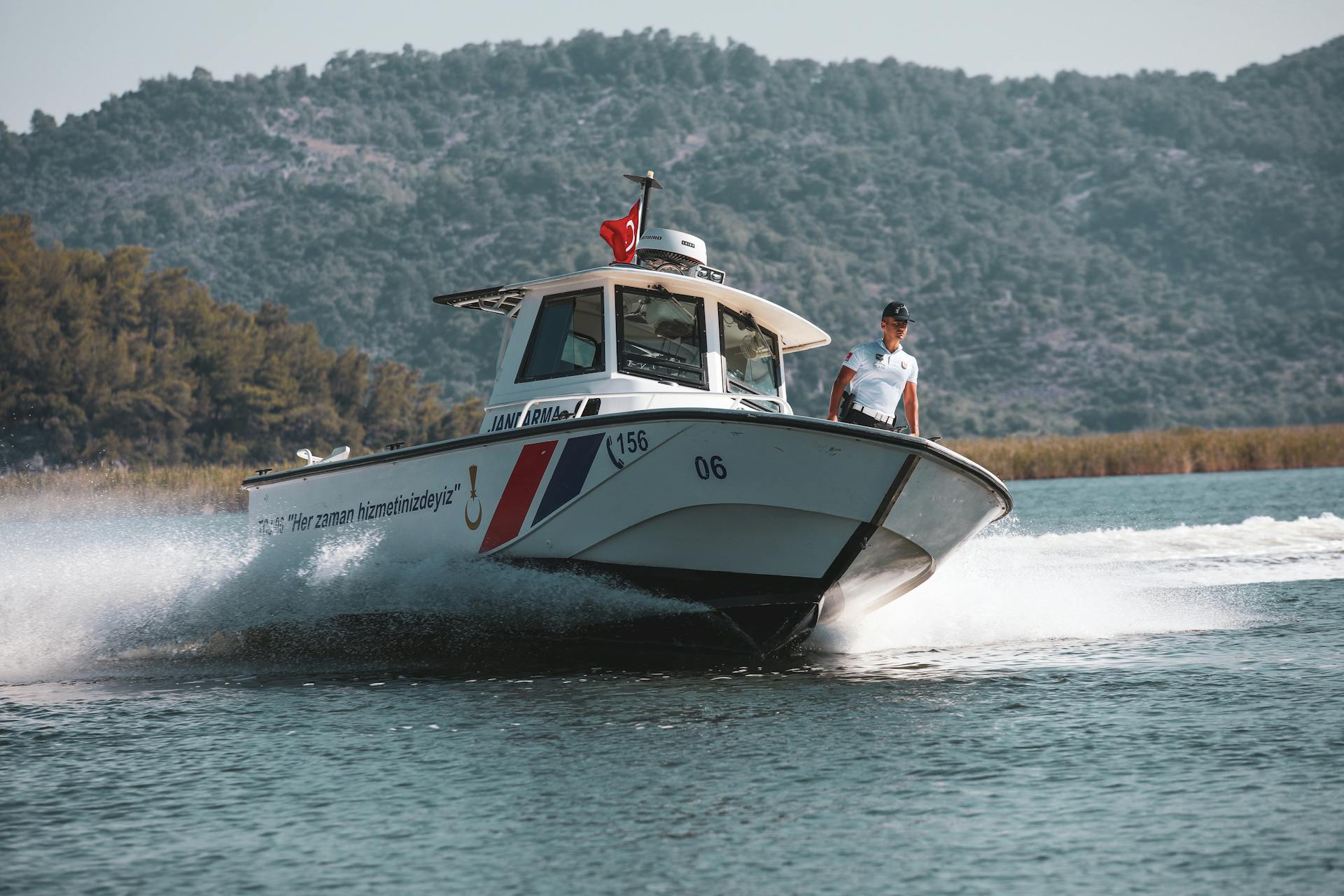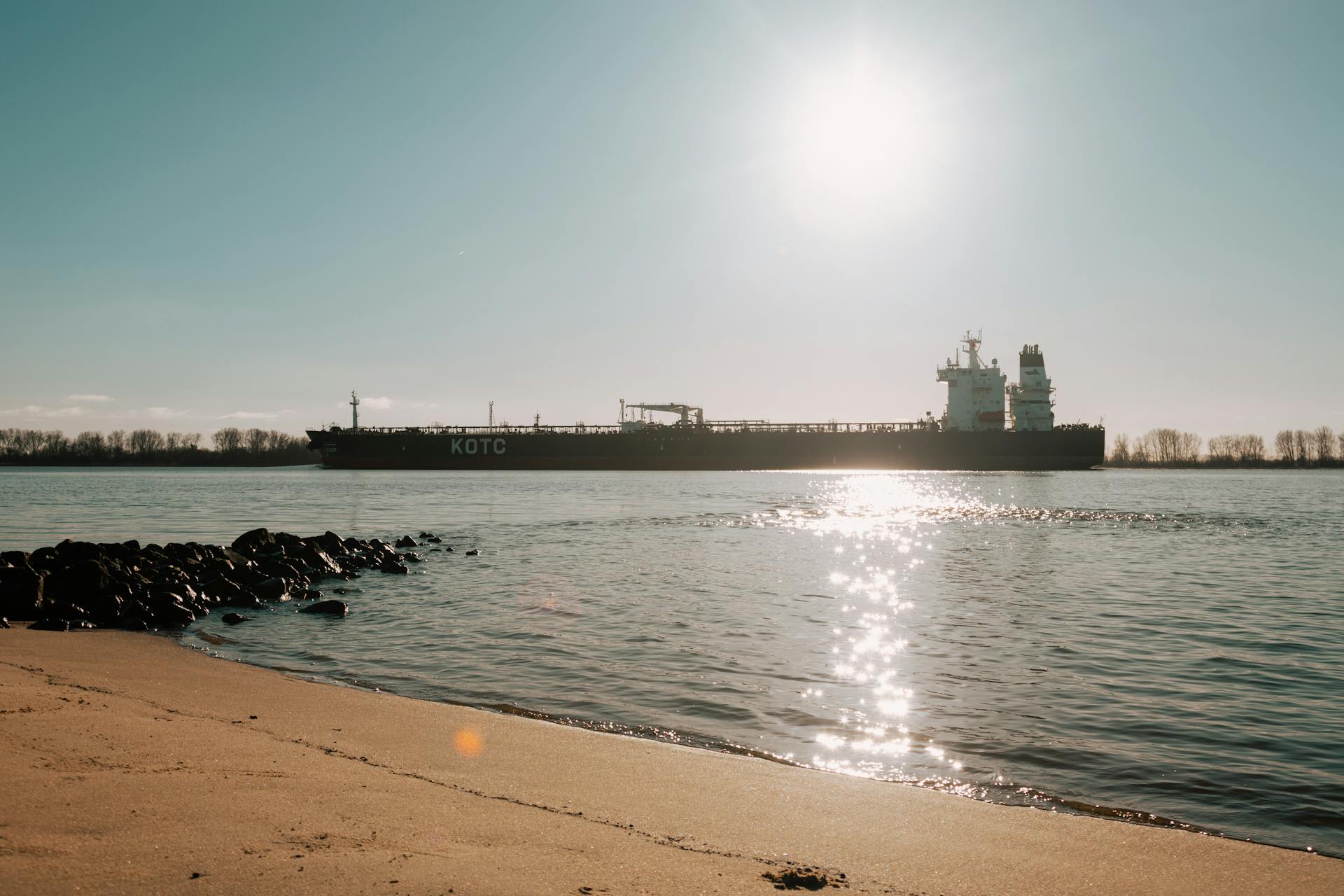
The history of livestock transportation dates back to ancient times, with evidence of cattle being transported on foot or by cart as far back as 3000 BC.
In the 19th century, the development of railroads revolutionized livestock transportation, enabling the transportation of large numbers of animals over long distances.
The first refrigerated railcars were introduced in the late 1800s, allowing for the transportation of perishable goods, including meat and dairy products.
Livestock transportation by truck became increasingly popular in the mid-20th century, offering a faster and more flexible alternative to rail.
History of Livestock Transportation
Throughout most of human history, the primary means of livestock transportation was by droving, which involved moving animals to seasonal grazing ranges or to market, usually over short distances of a few miles.
Droving was a common practice in archipelagos, where livestock transport by boats has occurred since ancient times, although the scale of such transport is limited.
Intriguing read: Alaska Car Transport Tacoma Port
The distances involved in droving were usually only a few miles, although they could occasionally be much longer under certain economic conditions in some times and places.
In the 19th century, the introduction of railroads revolutionized livestock transportation, with the first shipment of live cattle to Chicago by rail car occurring in 1867.
19th Century
In the 19th century, Chicago's meat exports rose to almost 10% by 1848.
The first shipment of live cattle to Chicago by rail car was in 1867, marking a significant change in the livestock industry. This event took place on the Kansas Pacific Railway, where about twenty carloads of Longhorns from Texas left the rail yard at Abilene, Kansas.
Cattle trails were carefully chosen to minimize distance and maximize feed to sustain and fatten cattle. Cowboys were hired to gather, drive, and hold cattle at major buying stations.
Cowboys reported route trail fatalities of about 3%. As the railroads expanded, processors multiplied and refrigeration technology developed.
The refrigerated rail car was patented in 1867, making it possible to transport meat without the need for live cattle.
20th Century
By the early 20th century, railroads dominated the dressed meat market and the commodity trucking industry was in its infancy.
The railroads' grip on the market started to slip by the middle of the 20th century, as the refrigerated trailer was developed for commercial trucking.
The trucking industry's growth led to the shipping of processed meats being done primarily by trucks, and livestock-hauling trailers for motor trucks became well-developed.
Shipping live cattle by truck was much more economical and humane than rail transport, and offered more options for routing cattle to auctions, feeders, and processors.
The trucking industry played a crucial role in creating an interconnected road system throughout the United States.
Widespread, affordable, and convenient livestock trucking brought the end of widespread droving on public roads in many countries, a transition that happened between the 1910s and the 1940s.
Public roads in countries where droving was once common transformed from pedestrian-focused commons to motor-vehicle-dominated right-of-ways during this time.
Livestock Transportation Laws and Regulations
In September 2020, the Dutch Agriculture Minister requested the EU Agriculture and Fisheries Council to adjust animal welfare regulations and limit the transport of livestock for slaughter.
The UK Environment Secretary unveiled plans to ban the export of live animals for slaughter and fattening from England and Wales on 3 December 2020.
Animal welfare is a growing concern in the livestock transportation industry. A regional court in Germany prohibited the live exportation of 132 breeding heifers to Morocco in 2020 because the conditions under which they would be slaughtered were deemed "inhumane".
The Government of New Zealand announced a plan to phase out the export of livestock by sea by 2023 after a transition period of up to two years, making it the first country in history to do so.
Key countries and their livestock transportation laws and regulations:
- UK: banned export of live animals for slaughter and fattening from England and Wales
- New Zealand: phasing out export of livestock by sea by 2023
- Germany: prohibited live exportation of 132 breeding heifers to Morocco
Legal Status
In September 2020, Dutch Agriculture Minister Carola Schouten requested the EU Agriculture and Fisheries Council to adjust animal welfare regulations. This move aimed to limit the transport of livestock for slaughter.
The UK Environment Secretary George Eustice unveiled plans to ban the export of live animals for slaughter and fattening from England and Wales on 3 December 2020. This ban would exclude poultry and not affect Northern Ireland.
A regional court in Germany prohibited the live exportation of 132 breeding heifers in 2020. This decision was made because the conditions under which they would be slaughtered in Morocco would be "inhumane".
The Government of New Zealand announced plans to phase out the export of livestock by sea by 2023 after a transition period of up to two years in April 2021. This move was made to raise animal welfare standards.
Here are some key points about the legal status of livestock transportation:
- Animal welfare regulations are being adjusted in the EU.
- The UK plans to ban the export of live animals for slaughter and fattening from England and Wales.
- Germany has prohibited the live exportation of breeding heifers due to inhumane conditions.
- New Zealand has announced plans to phase out the export of livestock by sea by 2023.
Specific Incidents
The loss of the MV Uniceb in the Indian Ocean in 1996 resulted in the deaths of 67,488 sheep, prompting animal welfare organizations to campaign against the livestock trade.
In 2009, the DANNY F II capsized in the Mediterranean Sea, resulting in the loss of many crew members and over 20,000 animals.
Fire broke out onboard the livestock carrier Estancia in August 2013, anchored off Berbera in the Gulf of Aden.
The Asia Raya caught fire in May 2015, carrying 634 cows originally destined for East Kalimantan in Indonesia, and many of the cattle lost their lives.
A livestock carrier sunk in the Gulf of Aden on July 12, 2015, resulting in the death of all 3,000 animals on board and two crew members.
The Haidar sank in Barcarena, Brazil, in October 2015, carrying 5,000 cattle, with an unknown number drowning and only a few surviving.
The Nabolsi I caught fire in the Mediterranean Sea off Ierapetra, Crete, in the autumn of 2015, while en route from Beirut to Alexandria.
The Wardeh ran aground in the Mediterranean Sea near Mersin, Turkey, in January 2019, but fortunately had no animals on board at the time.
The Queen Hind capsized and sank in the Port of Midia, Romania, in November 2019, resulting in the loss of 14,000 sheep on board.
The Gulf Livestock 1 sank in the East China Sea on September 2, 2020, resulting in the deaths of 6,000 cattle and 41 crew members, with two crew members surviving.
The Badr 1 sank in the Red Sea port of Suakin, Sudan, on June 12, 2022, resulting in the drowning of 15,000 sheep on board.
In 2024, the Al Kuwait was involved in an incident in Cape Town, South Africa, with 19,000 cattle on board, resulting in several deaths and the euthanization of 8 animals.
Choosing a Livestock Transportation Service
Choosing a livestock transportation service requires careful consideration of several factors. JCS Livestock is a trusted expert in the field, offering top-tier services for the safe, humane, and efficient movement of animals worldwide.
With over 20 years of experience, JCS Livestock has handled everything from cattle transport and sheep shipping to zoo animal transport and the relocation of exotic species. Their team excels in all forms of animal transport, from livestock hauling to cattle transport, sheep transport, and even zoo animal transport.
JCS Livestock has a network of trusted agents worldwide, making international livestock shipping a breeze. They comply with all necessary regulations and provide comprehensive livestock transport solutions tailored to your needs.
Why Choose JCS for Animal Needs?
JCS Livestock has a team of dedicated livestock haulers who ensure your animals are treated with the care and attention they deserve.
With over 20 years of experience, JCS Livestock has handled all manner of animals, from aardvarks to zebus, providing safe and humane transportation by air, road, or sea.
JCS Livestock has a network of trusted agents worldwide, making international livestock shipping a breeze and complying with all necessary regulations.
Their team is experienced in managing the entire transportation process, including customs clearance, flight bookings, and handling specific animal welfare requirements.
JCS Livestock uses a fleet of temperature-controlled vehicles and satellite-tracked trucks to ensure your livestock arrives safely and on time.
They've managed the safe relocation of animals across the globe, including Torgamba, a Sumatran rhino moved from the UK to a sanctuary in Indonesia.
JCS Livestock's comprehensive services cater to a wide range of clients, including tropical fish importers, livestock breeders, and pet owners.
Their commitment to safe and stress-free animal shipping is evident in their ability to handle complex animal transport operations, such as shipping a tiger or relocating an endangered animal like a rhino.
JCS Livestock is a trusted expert in livestock transport, offering top-tier services for the safe, humane, and efficient movement of animals worldwide.
Carriers
Carriers play a crucial role in livestock transportation. They come in different types, each with its own advantages and disadvantages.
Livestock carriers are ships that specialize in transporting large numbers of live animals, along with their requirements for the voyage, such as food, water, and bedding. Some voyages can last from three days to three or four weeks, while others may last for months if disease outbreaks are suspected.
Open livestock carriers have animal pens installed on open decks, providing continuous natural ventilation. This is a key factor in the transport of live animals, as poor ventilation can lead to oxygen depletion and toxic gas buildup.
Related reading: Last Mile (transportation)
Closed livestock carriers, on the other hand, have animal pens located within the holds and internal decks of the ship, providing a more controlled environment. However, ventilation is almost entirely dependent on mechanical systems, and regulations require specific ventilation standards.
Non-specialized livestock carriers transport live animals as part of the cargo on various classes of ships, often on short sea crossings with relatively small numbers of animals.
Types of Livestock and Transportation
Millions of sheep and many thousands of cattle have been transported on livestock carriers, making them the most numerous domesticated breeds transported in this way.
Sheep and cattle are not the only domesticated species transported, though - horses, camels, deer, goats, and even ostriches have been transported in smaller numbers.
Domesticated animals are often transported for breeding, trade, or farming purposes, and it's essential to ensure their safe transport.
Here are some common types of livestock transported:
- Sheep
- Cattle
- Horses
- Camels
- Deer
- Goats
- Ostriches
Types of Animals
Sheep and cattle are the most commonly transported domesticated breeds, with millions of sheep and thousands of cattle being moved on livestock carriers during the latter half of the twentieth century.
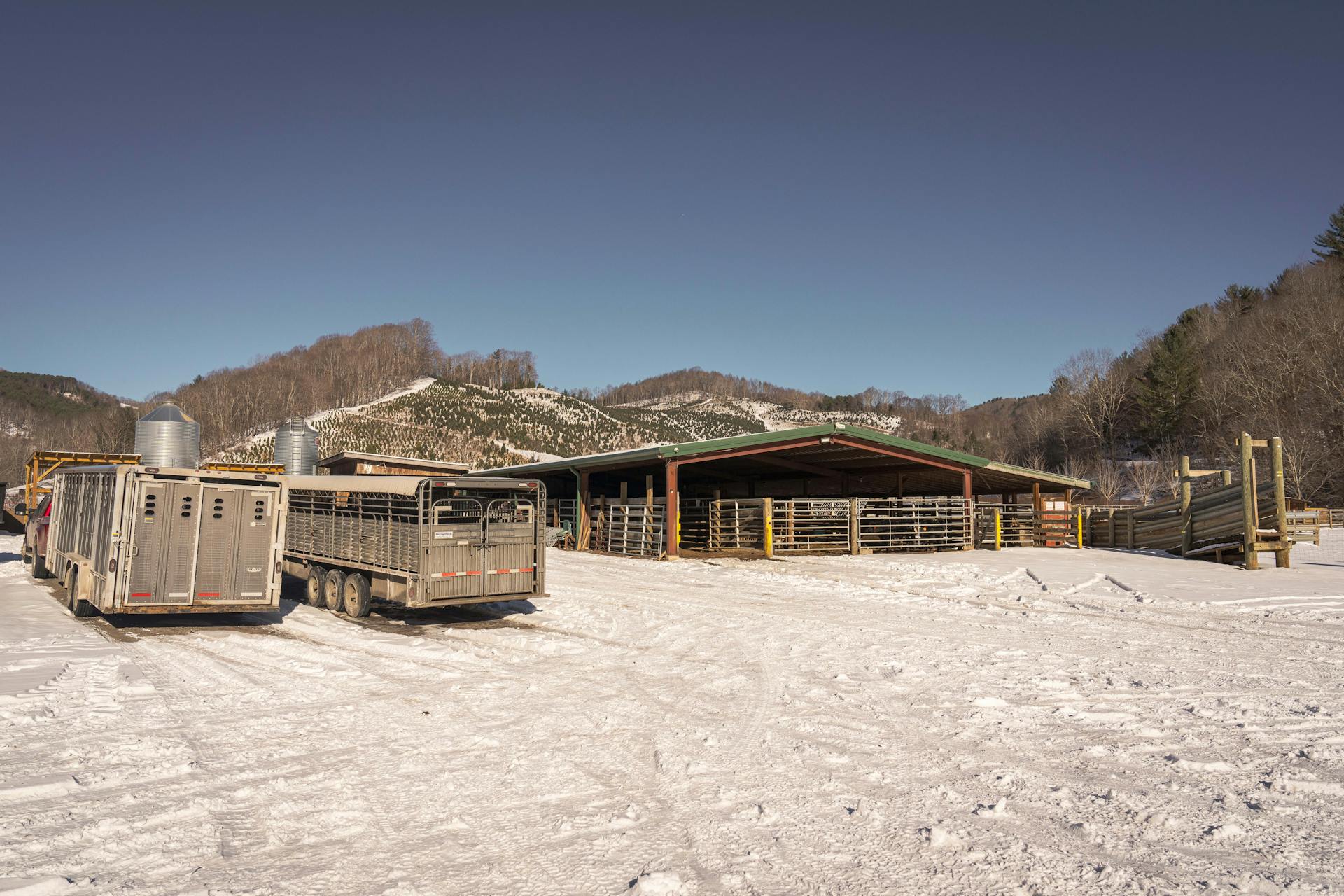
Cattle transport is a primary service offered by JCS Livestock, ensuring safe and efficient transport of animals for breeding, trade, or farming purposes.
Domesticated species like horses, camels, deer, goats, and even ostriches have been transported, although in smaller numbers.
Livestock carriers typically carry more crew members than conventional cargo ships of a similar size, with experienced stockmen being an essential part of the crew.
The space allocated to animals on livestock carriers is officially regulated according to their size and weight ranges, with larger and heavier animals allocated proportionately more space per head.
JCS Livestock also offers swine transport services, ensuring safe and secure transport of pigs for breeding or farm supply.
Swine transport requires specialized vehicles designed for humane and comfortable conditions, and JCS Livestock handles the complexities of international swine transport, including quarantine procedures and customs clearance.
Core Carriers Sub-Types
Livestock carriers specialize in transporting large numbers of live animals, along with their needs for the voyage, such as food, water, and sawdust bedding.
Voyages on these carriers can last anywhere from three days to three or four weeks, and sometimes even months if disease outbreaks are suspected.
Open livestock carriers have all or most of their animal pens installed on open decks, providing continuous natural ventilation and avoiding reliance on mechanical ventilation systems.
This is crucial because poor ventilation can lead to oxygen depletion and the buildup of toxic gases, which can be deadly for the animals – in some tropical conditions, this can happen as quickly as two or three hours.
Closed livestock carriers, on the other hand, have their animal pens located within the holds and internal decks of the ship, providing a more controlled environment and sheltering the animals from adverse weather.
However, ventilation in these carriers is almost entirely dependent on mechanical systems, which must meet specific standards for air changes per hour and have back-up systems in place.
Non-specialized livestock carriers transport live animals as part of their cargo on various classes of ship, often on short sea crossings like ferries, and typically involve smaller numbers of animals.
For another approach, see: Transportation to Cruise Ship
Ensuring Animal Welfare During Transport
Ensuring animal welfare during transport is crucial to prevent suffering and ensure the well-being of the animals. It's essential to assess animals before loading them onto a transport vehicle to ensure they're fit for the journey.
Animals must be bright, alert, moving, and breathing normally, with no signs of illness or poor health. They should be in good body condition, able to bear weight evenly on all limbs, and free from signs of disease.
A compromised animal, on the other hand, is one that's not fit to handle the stress of transportation. Examples of compromised animals include those that are lame, have mobility issues, or are suffering from acute frostbite.
Here's a list of conditions that make an animal compromised and require special care during transport:
- Lame or has mobility issues
- Bloated but showing no signs of discomfort or weakness
- Has acute frostbite
- Blind in both eyes
- Not fully healed after a procedure
- Has a deformity or fully-healed amputation without signs of pain
- Has an injured penis (unhealed or acute)
- Has a minor rectal or vaginal prolapse
- Is a wet bird
- Is in peak lactation period and cannot be milked to prevent engorgement
- Has any other signs of infirmity, illness, injury, or a condition that indicates a reduced capacity to withstand transport
Responsibilities
If you're involved in transporting animals, you're responsible for assessing their fitness for the journey. This means checking to see if they're healthy enough to withstand the trip.
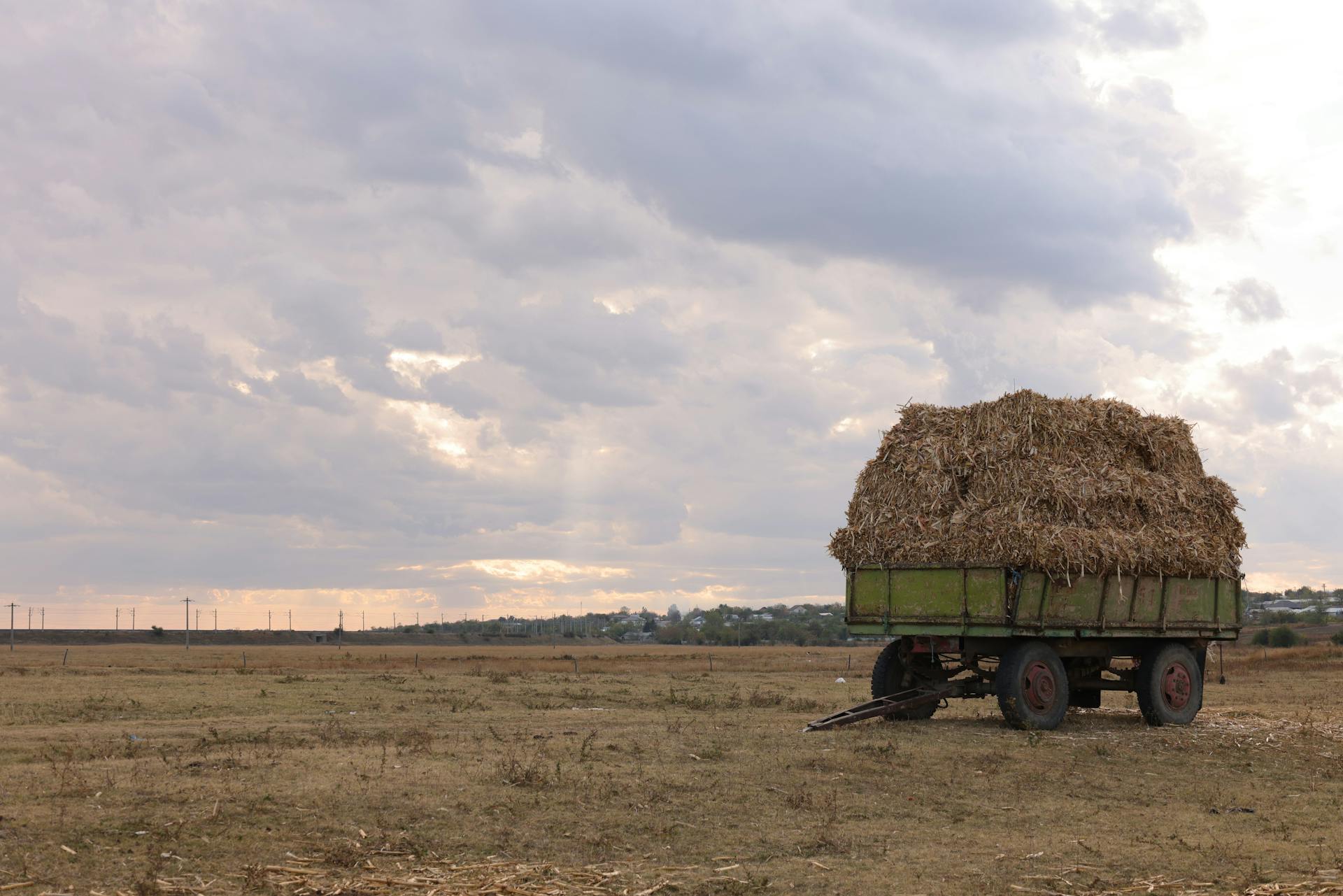
You must be familiar with Canada's transport of animals regulations, which can be found in Part XII of the Health of Animals Regulations. These regulations outline the requirements for transporting animals into, within, and out of Canada.
Loading, unloading, or transporting animals is a big responsibility, and you must select, prepare, and load only animals that are fit for the intended journey. This is crucial to ensure their safety and well-being.
Enforcement actions for non-compliance can be severe, including verbal or written notices and monetary or non-monetary penalties. The severity of the action will depend on the animal welfare situation and the level of non-compliance.
Ensure Animals Fit for Journey
Before transporting animals, it's crucial to ensure they're fit for the journey. This means assessing their overall health and well-being to prevent suffering and ensure a safe trip.
Animals must not be transported if they're non-ambulatory, have a fracture, or are lame to the extent that they exhibit pain or suffering. This includes being extremely thin, in shock, or showing signs of dehydration, hypothermia, or hyperthermia.
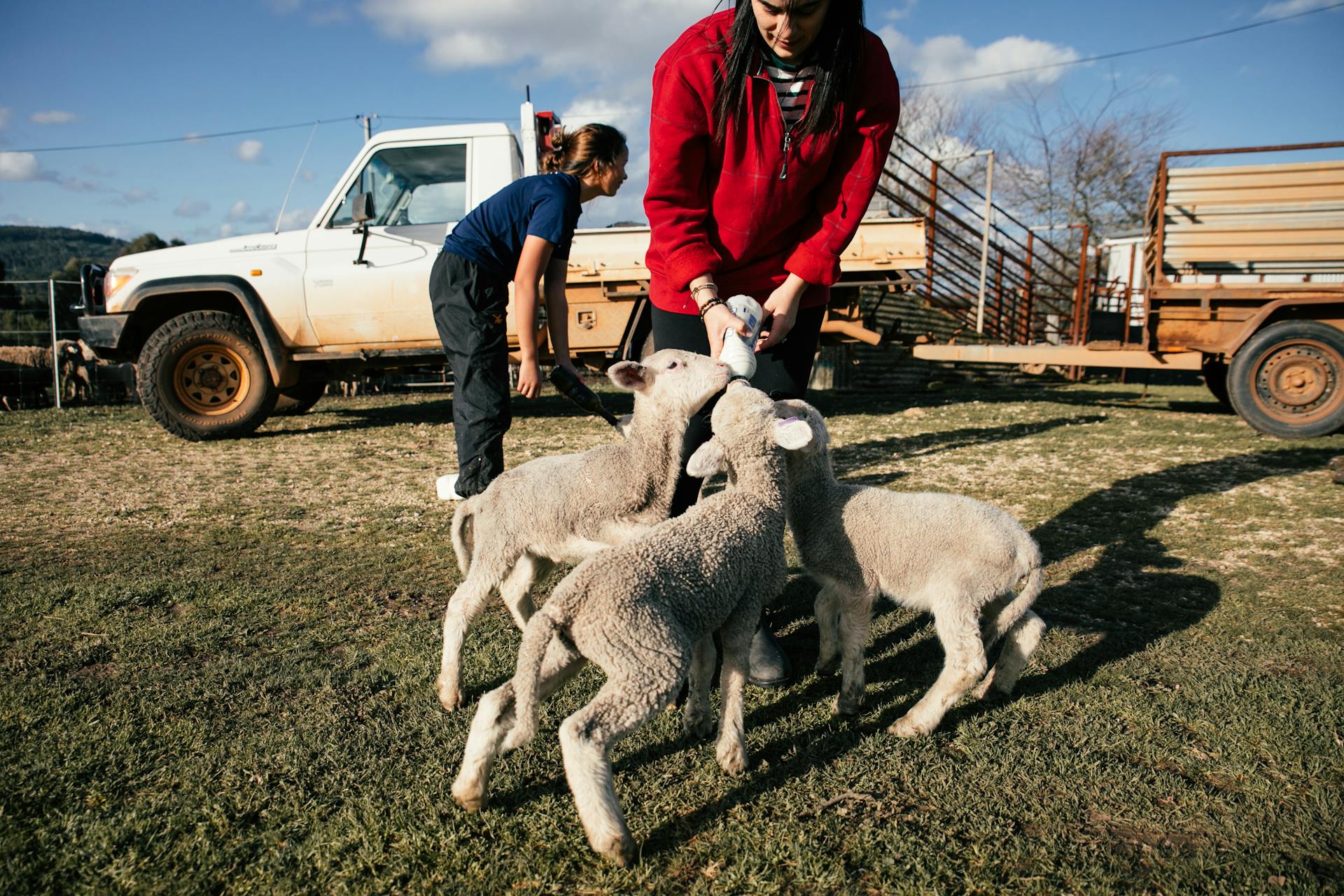
To check if an animal is fit for transport, look for signs of illness or poor health. Animals should be bright, alert, moving, and breathing normally, with no signs of disease, such as normal feces, nasal discharges, or unhealed injuries.
If an animal is compromised, it's best to transport it only short distances to get care, treatment, or to be humanely killed or slaughtered. Compromised animals can't be transported to assembly centers, and their transport must be accompanied by special provisions.
Here's a list of conditions that make an animal compromised and require special care during transport:
- Lame other than in a way described as "unfit"
- Has mobility limited by a device, including hobbles, other than those applied for treatment
- Bloated but showing no signs of discomfort or weakness
- Has acute frostbite
- Is blind in both eyes
- Has a deformity or fully-healed amputation without signs of pain
- Has an injured penis (unhealed or acute)
- Has a minor rectal or vaginal prolapse
- Is a wet bird
- Is in peak lactation period and cannot be milked to prevent engorgement
- Has any other signs of infirmity, illness, injury, or condition that indicates a reduced capacity to withstand transport
Remember, it's always better to err on the side of caution when it comes to animal welfare during transport. If you're unsure about an animal's fitness for transport, consult with a veterinarian or seek advice from a professional.
Animal Transportation Checklist and Safety
Animal transportation requires careful planning and attention to detail to ensure the safety and well-being of the animals.
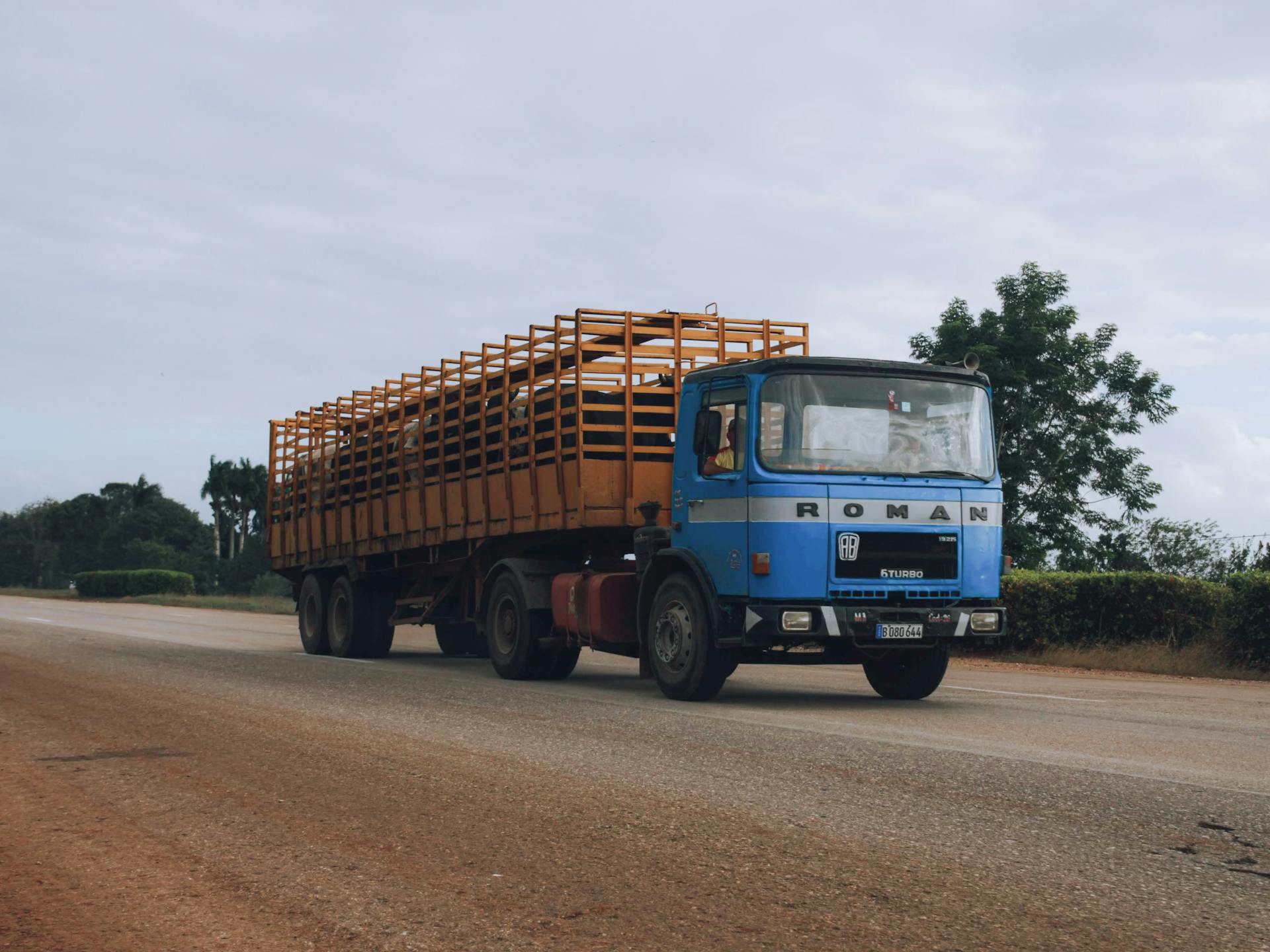
Before loading animals, it's essential to assess their fitness for transport. According to the National Farm Animal Care Council (NFACC) codes of practice, only animals that are fit to handle transport may be loaded. If you're unsure, refer to the NFACC species-specific codes of practice or seek advice from a professional.
To ensure a smooth journey, it's crucial to have a contingency plan in place. This should include knowledge about humane transport of animals, the species being transported, and animal handling. You should also have clean equipment and a biosecurity plan to prevent the spread of disease.
When assessing animals for transport, consider factors that may affect their journey, such as weather conditions, road quality, and the animal's age and health. It's also essential to have a plan for monitoring the animals during transport and keeping accurate records.
Here is a checklist to help you prepare for animal transport:
- Knowledge about humane transport of animals
- Knowledge of the species
- Knowledge of animal handling
- Contingency plan
- Clean equipment/biosecurity
- Animals assessed prior to transport
- Assess if special handling is required
- Consider factors that affect transport:
- Plan for animal monitoring plan during transport
- Records:
General Information and Priority
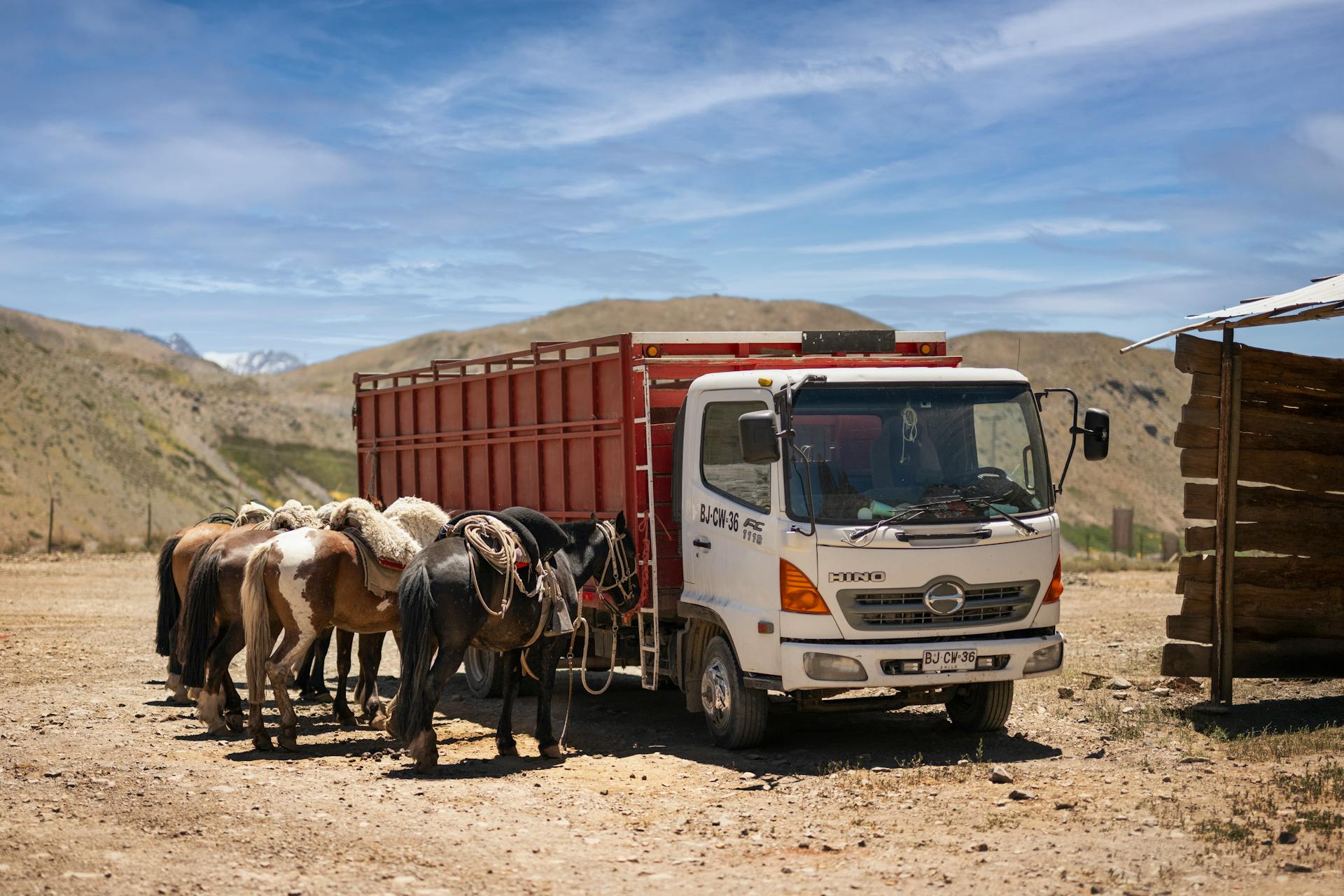
Your livestock is in good hands with a specialist team that knows the ins and outs of IATA's Live Animals Regulations (LAR). This global standard ensures safe transportation by air.
The welfare of your animals is a top priority, and our team can offer advice on quarantine regulations in different countries. This expertise helps ensure a smooth journey for your livestock.
All necessary paperwork, travel documentation, and health certifications are obtained, so you can relax knowing everything is taken care of. Permits and shipping regulations are finalized ahead of the flight, giving you peace of mind.
Expertise in IATA's LAR gives our team a thorough understanding of what's required for safe and compliant transportation. This knowledge is crucial for a successful livestock transport.
Frequently Asked Questions
How much are livestock hauling rates?
Livestock hauling rates typically range from $2 to $4.50 per loaded mile, but can vary significantly depending on the specific route and services provided.
What is the best way to transport livestock?
For transporting livestock, a well-maintained livestock trailer is the best option, providing a safe and comfortable environment for the animals
How do I become a livestock transporter?
To become a livestock transporter, you'll need a high school diploma and a commercial driver's license (CDL) certification. With these basics covered, you can start exploring the requirements and opportunities in this field.
Sources
- https://en.wikipedia.org/wiki/Livestock_transportation
- https://www.jamescargo.com/livestock/
- http://inspection.canada.ca/en/animal-health/terrestrial-animals/humane-transport/livestock-and-poultry-transport-canada
- https://en.wikipedia.org/wiki/Livestock_carrier
- https://intradco-global.com/livestock-transport/
Featured Images: pexels.com
